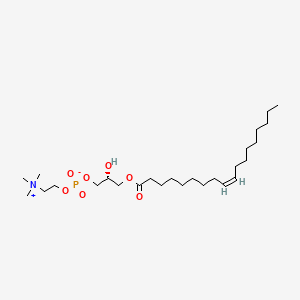
|
1-Oleoyl-sn-glycero-3-phosphocholine |
1-Oleoyl-sn-glycero-3-phosphocholine is a lipid of Glycerophospholipids (GP) class. |
11 |
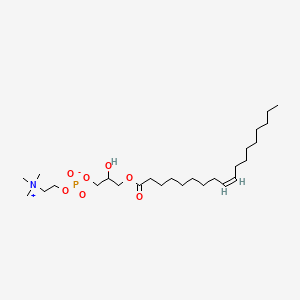
|
PC(18:1(9Z)/0:0)[rac] |
PC(18:1(9Z)/0:0)[rac] is a lipid of Glycerophospholipids (GP) class. |
14 |
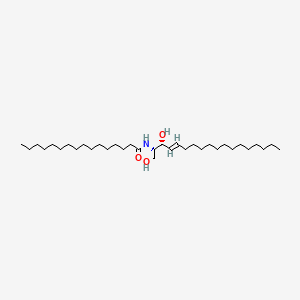
|
N-Palmitoylsphingosine |
N-Palmitoylsphingosine is a lipid of Sphingolipids (SP) class. The involved functions are known as ceramide biosynthetic process, Apoptosis, Regulation, Signal Transduction and Caspase-Dependent Apoptosis. N-palmitoylsphingosine often locates in Mitochondria, Membrane, Extracellular and Endoplasmic Reticulum. The associated genes with N-Palmitoylsphingosine are BCL2 gene, cytochrome c'', BCL2L1 gene, LASS6 gene and LASS5 gene. The related lipids are dihydroceramide, Fatty Acids, Sphingolipids, Palmitates and inositolphosphorylceramide. |
71 |
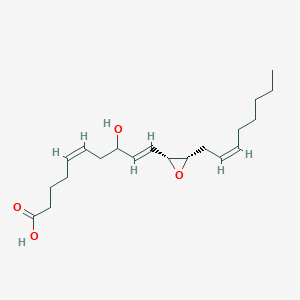
|
11,12-epoxy-8-hydroxyeicosa-5,9,14-trienoic acid |
11,12-epoxy-8-hydroxyeicosa-5,9,14-trienoic acid is a lipid of Fatty Acyls (FA) class. |
98 |
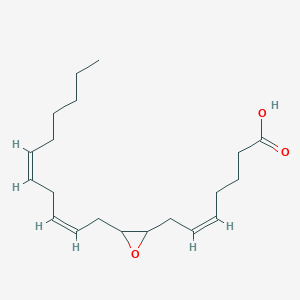
|
(+/-)8,9-epetre |
|
137 |
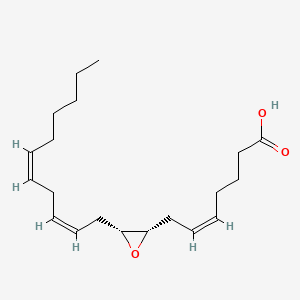
|
8s,9r-epetre |
8s,9r-epetre is a lipid of Fatty Acyls (FA) class. |
137 |
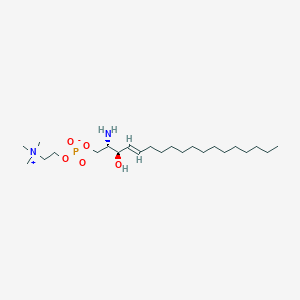
|
sphingosylphosphorylcholine |
sphingosylphosphorylcholine is a lipid of Sphingolipids (SP) class. Sphingosylphosphorylcholine is associated with abnormalities such as Cerebral Vasospasm, Subarachnoid Hemorrhage, Atherosclerosis, Hypertensive disease and Niemann-Pick Diseases. The involved functions are known as MAP kinase kinase activity, JUN kinase activity, Phosphorylation, biphenyl synthase activity and Cell Death. Sphingosylphosphorylcholine often locates in Adipose tissue, Protoplasm, Body tissue, Membrane and Extracellular. The associated genes with sphingosylphosphorylcholine are UCN3 gene, MAPK9 gene, JUN gene, NAA50 gene and P4HTM gene. The related lipids are Lysophospholipids, lysophosphatidic acid, Lysophosphatidylcholines, Sphingolipids and Saponin. The related experimental models are Mouse Model. |
265 |

|
Sphingosine 1-phosphate |
Sphingosine 1-phosphate is a lipid of Sphingolipids (SP) class. Sphingosine 1-phosphate is associated with abnormalities such as Infection, Painful Bladder Syndrome, Atherosclerosis, Hyperglycemia and Rheumatoid Arthritis. The involved functions are known as Phosphorylation, Regulation, enzyme activity, Energy Absorption and Vascular Permeability. Sphingosine 1-phosphate often locates in Endothelium, Tissue membrane, Vascular System, Protoplasm and Microfilaments. The associated genes with Sphingosine 1-phosphate are MBTPS1 gene, FBXL15 gene, TEK gene, NTRK1 gene and Gene Family. The related lipids are Promega, Lipopolysaccharides, lysophosphatidic acid, Lysophosphatidylcholines and Lysophospholipids. The related experimental models are Knock-out, Mouse Model, Transgenic Model, Disease model and Experimental Autoimmune Encephalomyelitis. |
2005 |
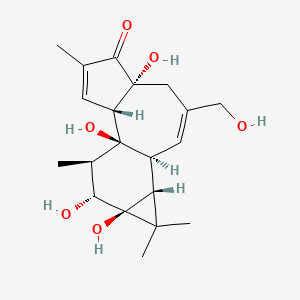
|
Phorbol |
Phorbol is a lipid of Prenol Lipids (PR) class. Phorbol is associated with abnormalities such as furuncle, Infection, endothelial dysfunction, Morphologically altered structure and Acute erythroleukemia. The involved functions are known as Tyrosine Phosphorylation, Metabolic Inhibition, Transcription, Genetic, Protein Biosynthesis and Signal. Phorbol often locates in Tissue membrane, Membrane, Cell surface, soluble and Cytoplasmic Domain. The associated genes with Phorbol are STAT3 gene, JAK2 gene, JUN gene, PROC gene and MAPK8 gene. The related lipids are Lipopolysaccharides, Phosphatidylserines, Liposomes, Fatty Acids and Octanols. |
2082 |
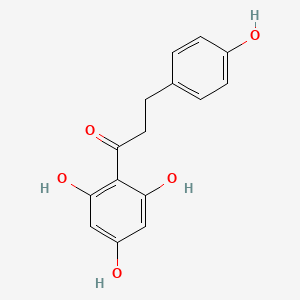
|
phloretin |
phloretin is a lipid of Polyketides (PK) class. Phloretin is associated with abnormalities such as Atherosclerosis, Diabetes Mellitus, Non-Insulin-Dependent, Alkalemia, Renal tubular disorder and pathologic fistula. The involved functions are known as Anabolism, glycosyltransferase activity, Biosynthetic Pathways, Localized desquamation and Biological Processes. Phloretin often locates in soluble, BL21, Cytoplasmic, Extracellular and Cytoplasm. The associated genes with phloretin are Homologous Gene, CD36 gene, Candidate Disease Gene, SLC33A1 gene and PAK1IP1 gene. The related lipids are Liposomes, Palmitates, Fatty Acids, Sterols and 6-ketocholestanol. The related experimental models are Knock-out. |
2367 |









